Three Migrations Going On
2024, No. 07 — August 14th
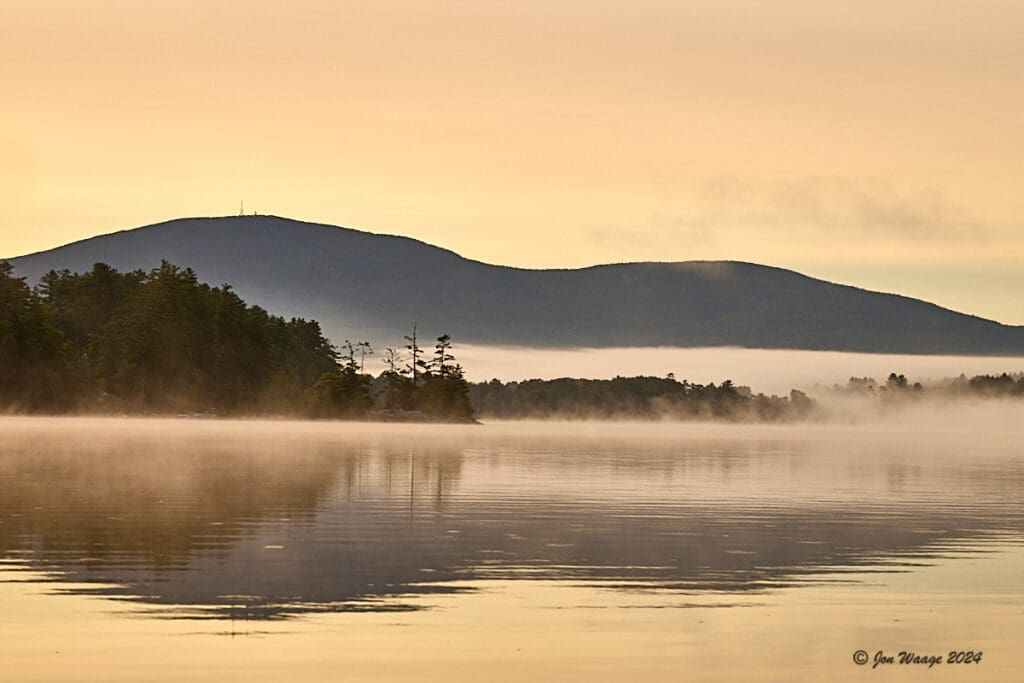
|
Loon Update
|
Summer Season is winding down and our pair is still on the Lake but only the female seems localized at the Cove end.
We assume she and the male will remain until their normal departure times (October-November) for the ocean and we will keep you posted. They both spend a lot of time fishing near the drop off on both ends of the Lake so please keep an eye out when boating!
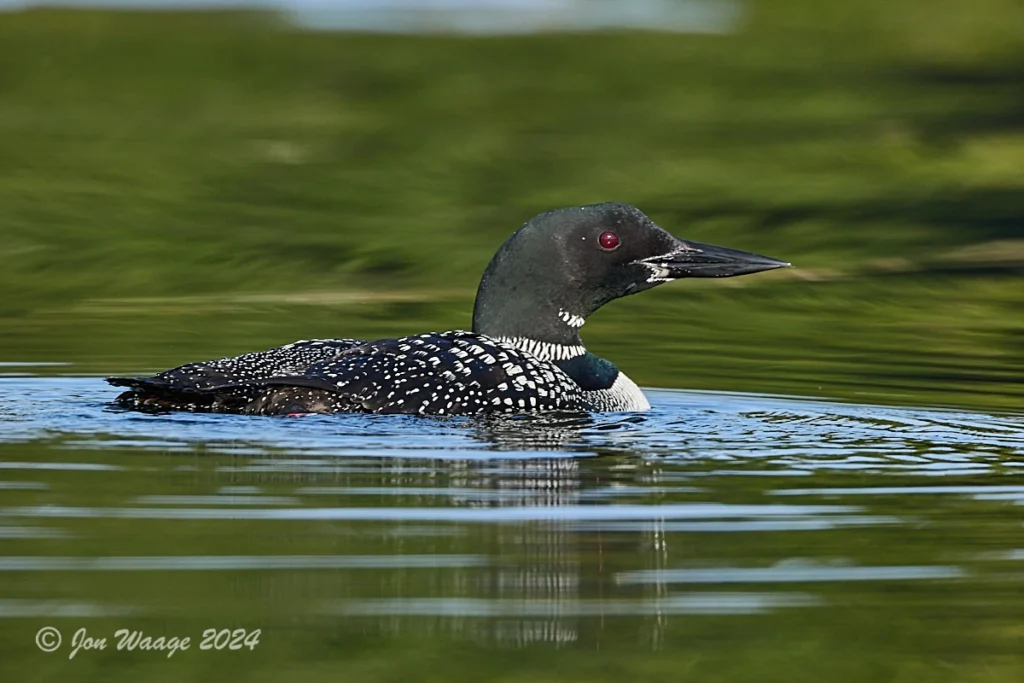
The female (above) has begun molting into winter plumage. You can also see a bit of the silver and red leg tags (about 2/3rds of the way back on her body at the waterline) that let us know it is her.
|
Three Migrations Have Begun:
|
|
Monarchs heading south:
|

It has been another rough year on the Monarch population that moves back and forth between the Northeast and Mexico. Still, we are finding caterpillars on our milkweed and seeing a few more adults as it gets close to peak migration time.

Remember that Monarchs need more than milkweed patches. They also need food for the adults and their winged offspring. That means plenty of nectar plants in our yards. To learn more about Monarchs and suitable plantings for them check the Monarch Joint Venture website.
An amazing thing about Monarch migration is that, neither the returning offspring nor their parents or grandparents have ever been to Mexico. Just how Monarchs going to Mexico for the winter know when and where to go continues to be a mystery. Unfortunately what is easy to understand is that their essential habitats both in Mexico and in the US and Canada have dwindled and their population has continued to decline. At the very least we can continue to encourage others to join us in providing both milkweed patches and nectar plants for those Monarchs who do make it up here.
|
Dragonflies heading south:
|
If you have a backyard with a woodland border and lots of insects, you have probably been seeing large number of big dragonflies foraging and even mating.
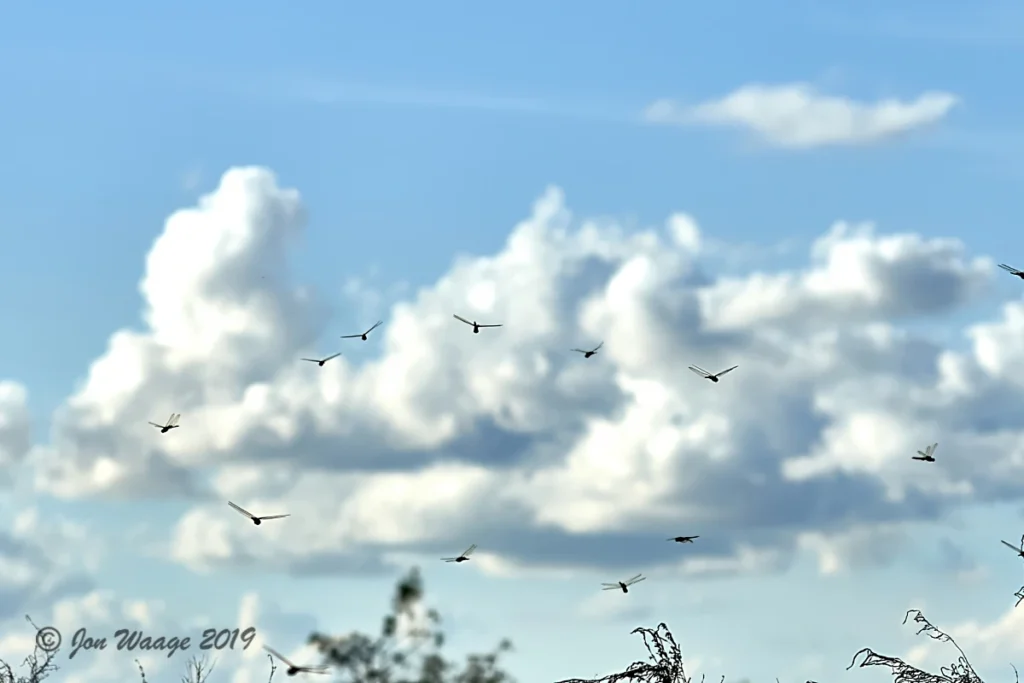
The photo above was taken in Florida, but the last few weeks our New Hampshire yard has had 50-100 large Darners (Aeschnid dragonflies) hunting and mating as they prepare to move southward, some for long distances.
Below a cruising Darner has managed to capture a large green bug.
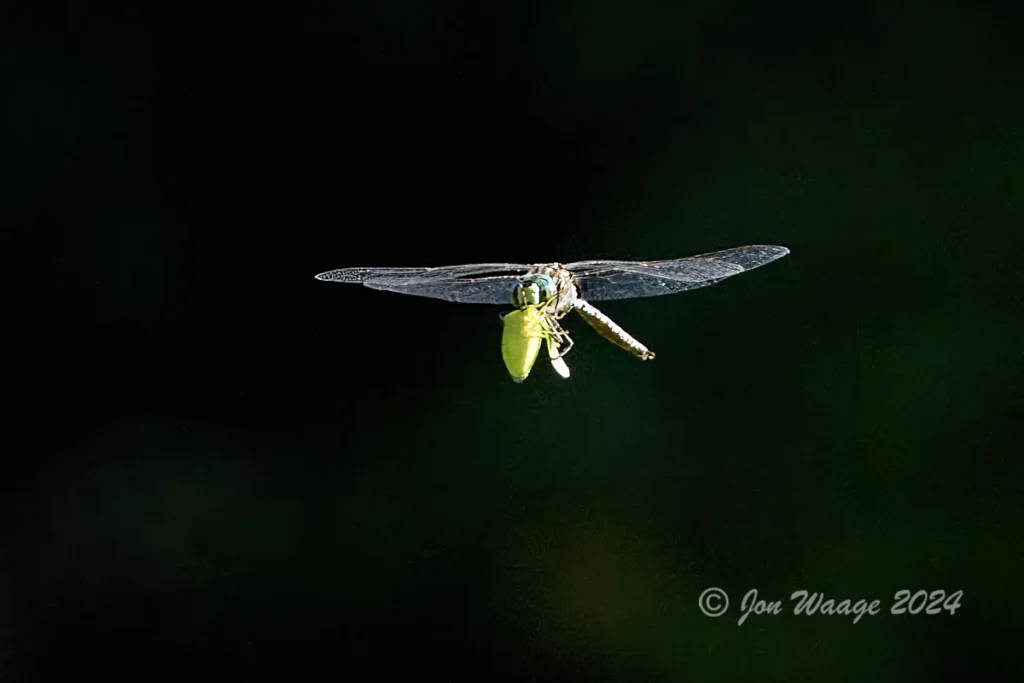
The Darners that are mating at this time of year will lay eggs that will either overwinter or hatch into nymphs that will over winter. It can take up to two years as nymphs for some of these dragonflies to complete their juvenile stage.
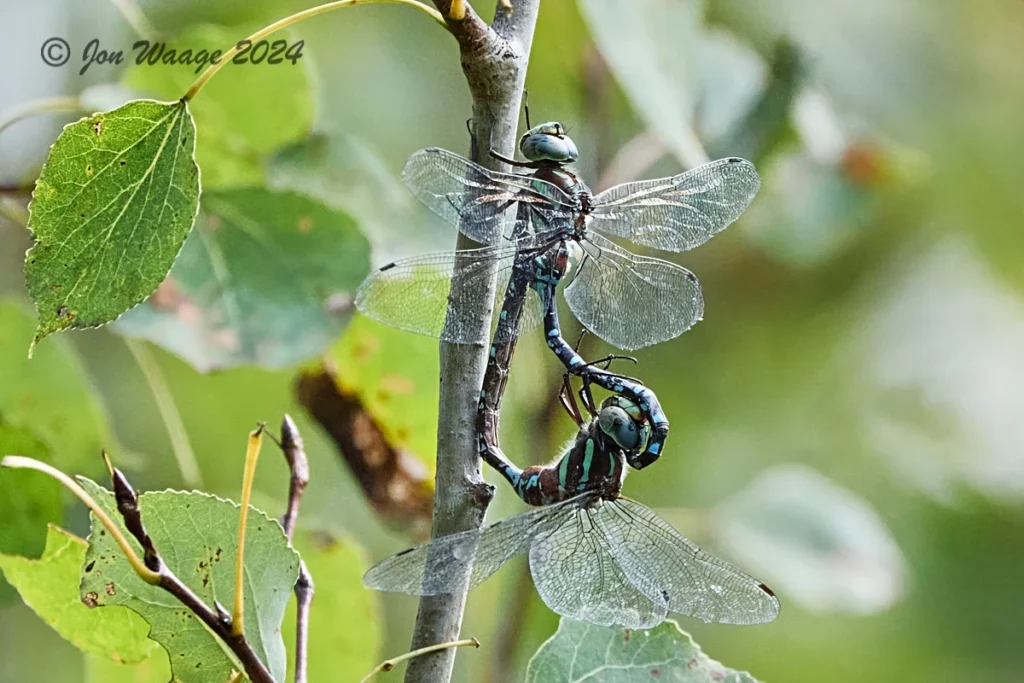
Pair of Darners (probably Black-tipped Darners) mating in September.
You have probably read about massive swarms of migrating dragonflies on Rhode Island beaches this summer. Many species of dragonflies are long distance migrators. One large dragonfly, the Wandering Glider (Pantala flavescens) flies non-stop between Africa and India, a 3,730 mile journey!
In North America one large dragonfly, the Green Darner (Anax junius) has a remarkable three part migration cycle.
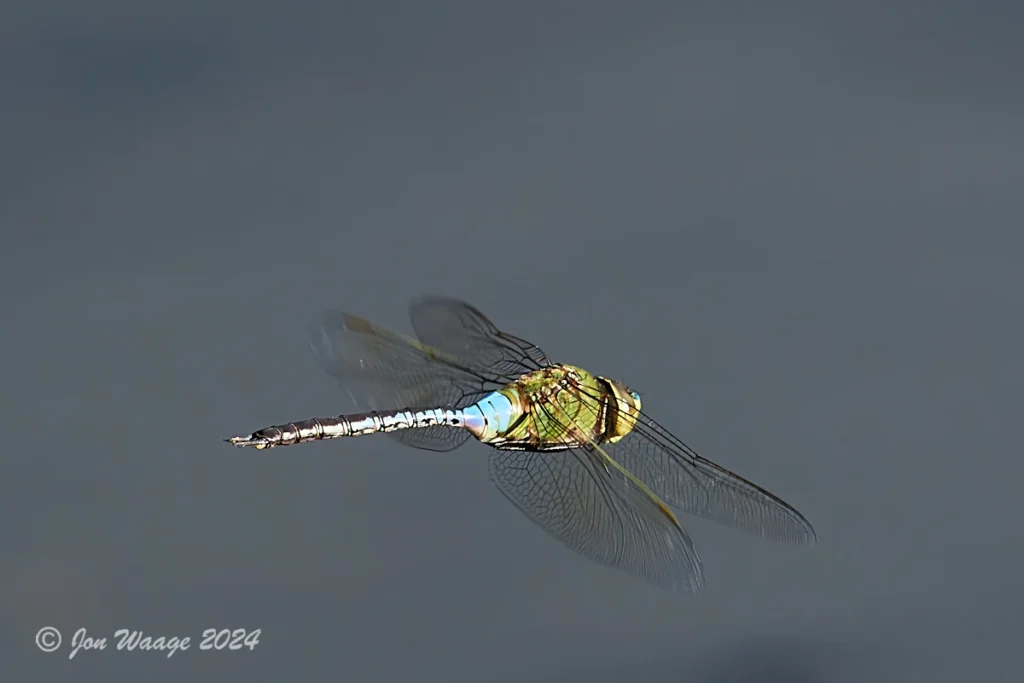
Male Green Darner (Anax junius) from the Southern US cruising in Turtle Cove in June.
Adults currently in New Hampshire are offspring of the first generation of Green Darners who got here early in the summer from the Southern US. They mated and laid eggs during the summer.
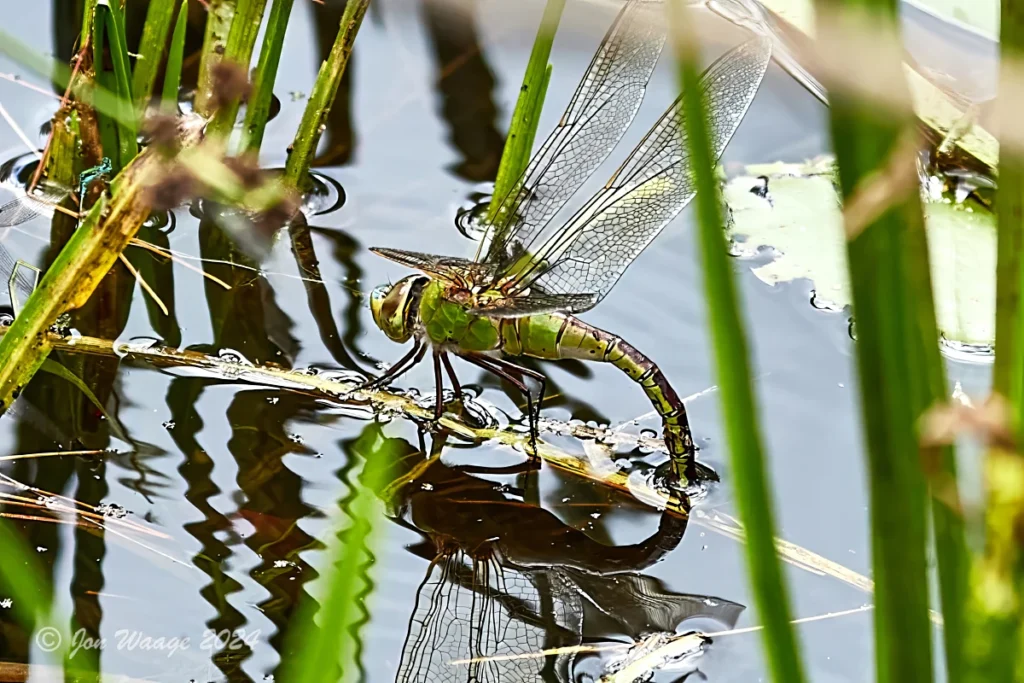
Female Green Darner laying eggs in Turtle Cove.
Those eggs hatched into nymphs that have been feeding all summer. They have recently been emerging into adults.
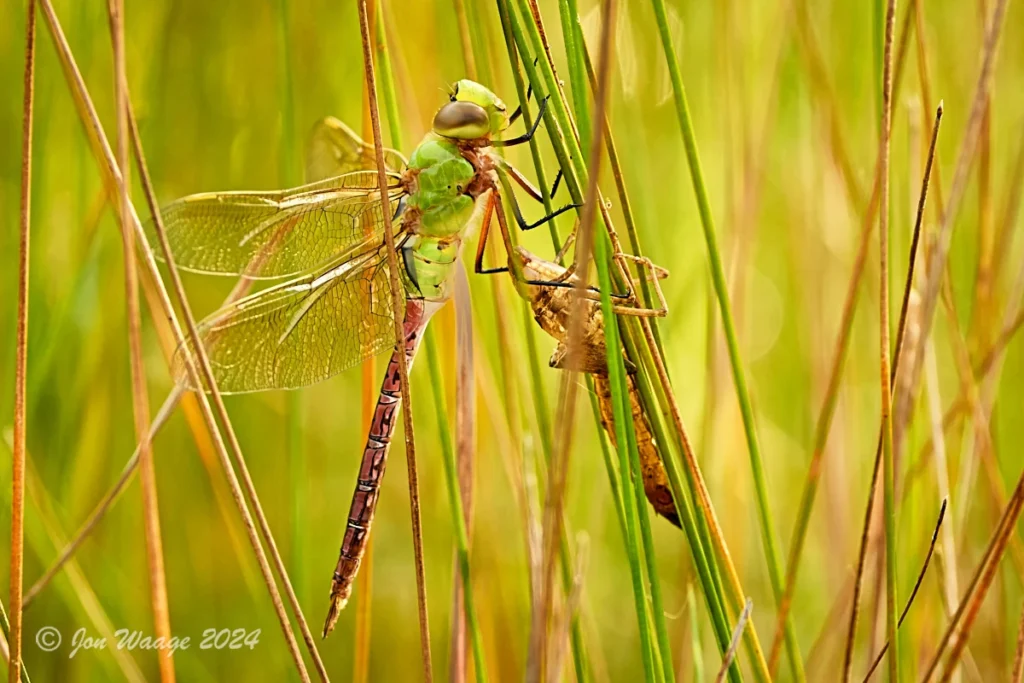
A male Green Darner newly emerged in Turtle Cove in August
These newly emerged second generation adults are leaving now for the South. They will mate and lay eggs there, starting the third generation of the cycle. That third generation will spend the winter in the South. Their adult offspring will fly north to start the cycle again.
Like Monarchs, we have learned a lot about dragonfly biology and behavior but still are working out how one generation goes south without ever having been there, another stays, and the third heads north.
|
Birds heading south:
|
Not to be left out of the story, many local birds are getting ready to head south for the winter and our yards are being visited by gathering flocks of migrating birds like the Northern Flicker female below. We will soon have large flocks of Flickers and other birds passing through.
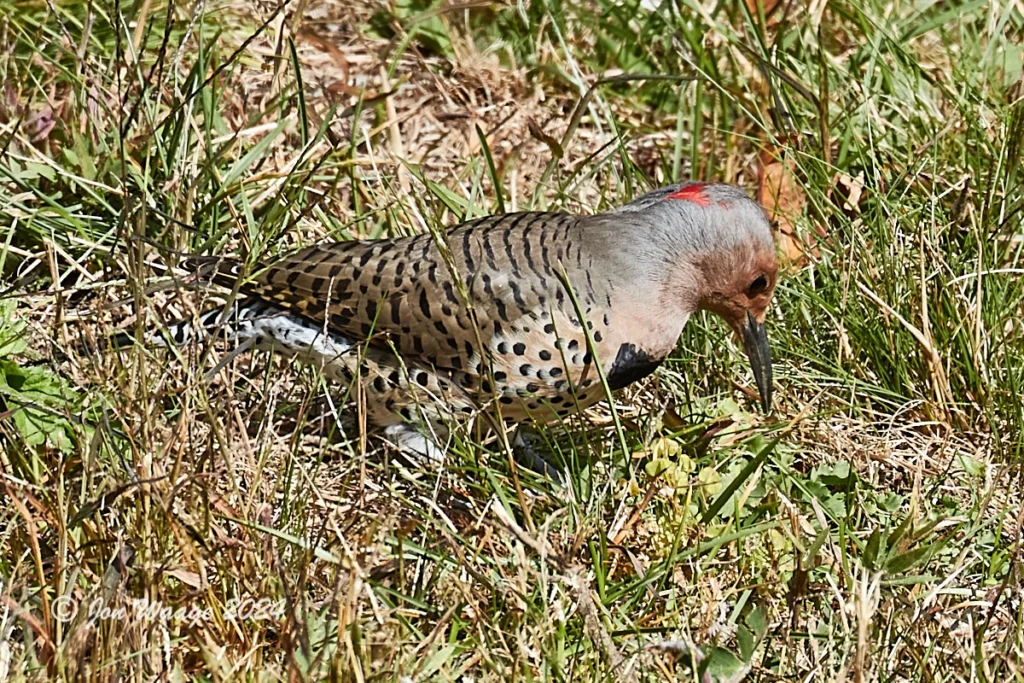
We are also seeing lots of “sort of familiar” looking birds that are the young of this year’s residents, like the juvenile Eastern Phoebe below.
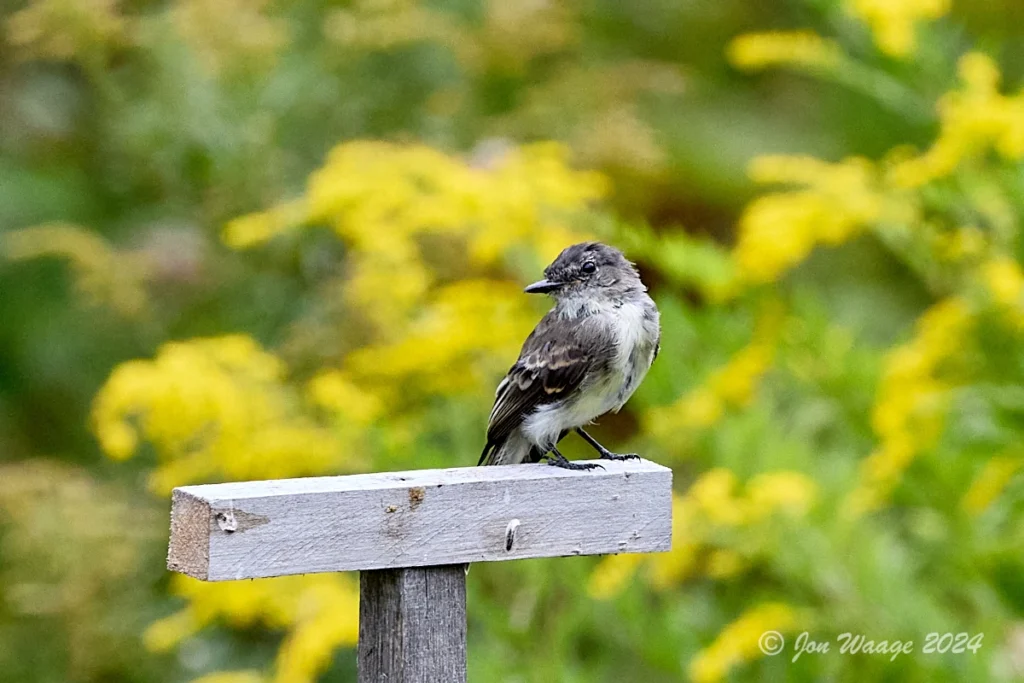
Like the Monarchs and dragonflies, they are fueling up for the long journey southward. This is when having a gardens and yards rich with insects, seeds and berries can be a tremendous help to migrating birds. Below a Goldfinch is eating seeds from a Cone Flower (Echinacea) that has already served as a food, nectar and pollen plant for many insects.

These amazing cycles of migration have been going on for a long time. Mostly we notice the spring arrival of brightly colored birds like warblers. But the Fall brings their return in duller winter plumage to tease the avid birders. Unlike the Monarchs and dragonflies, at least young birds often have adults to follow as they head south.
Those of us lucky enough to have yards full of native plants get to watch these semi-annual migrations first hand.
Bye for now… Jon and Jen
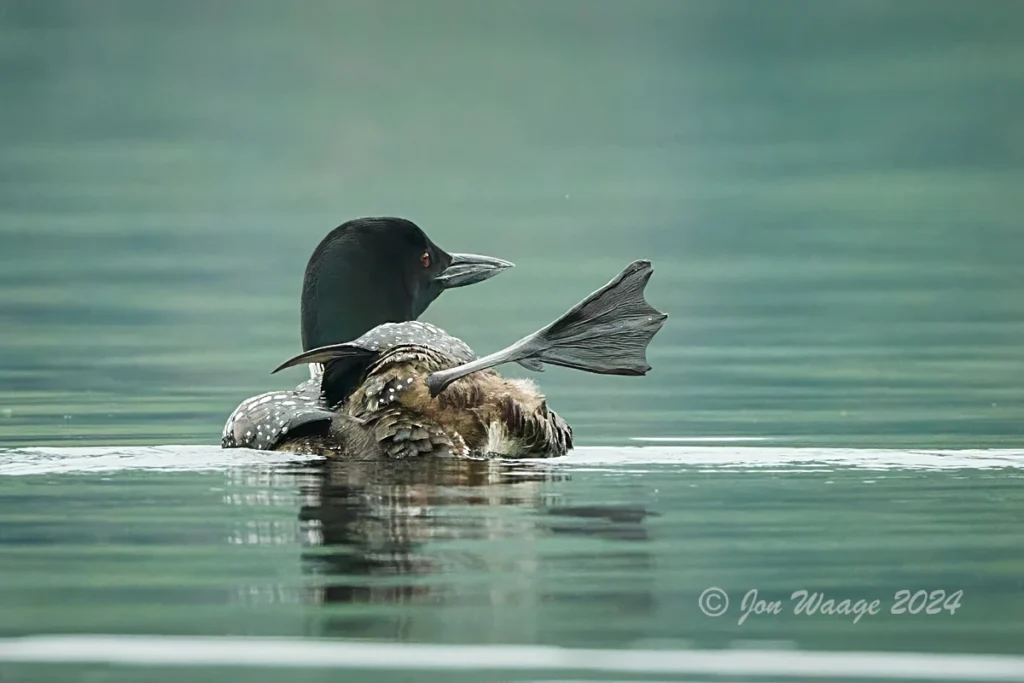
Text and Photographs by Jen Esten and Jon Waage

